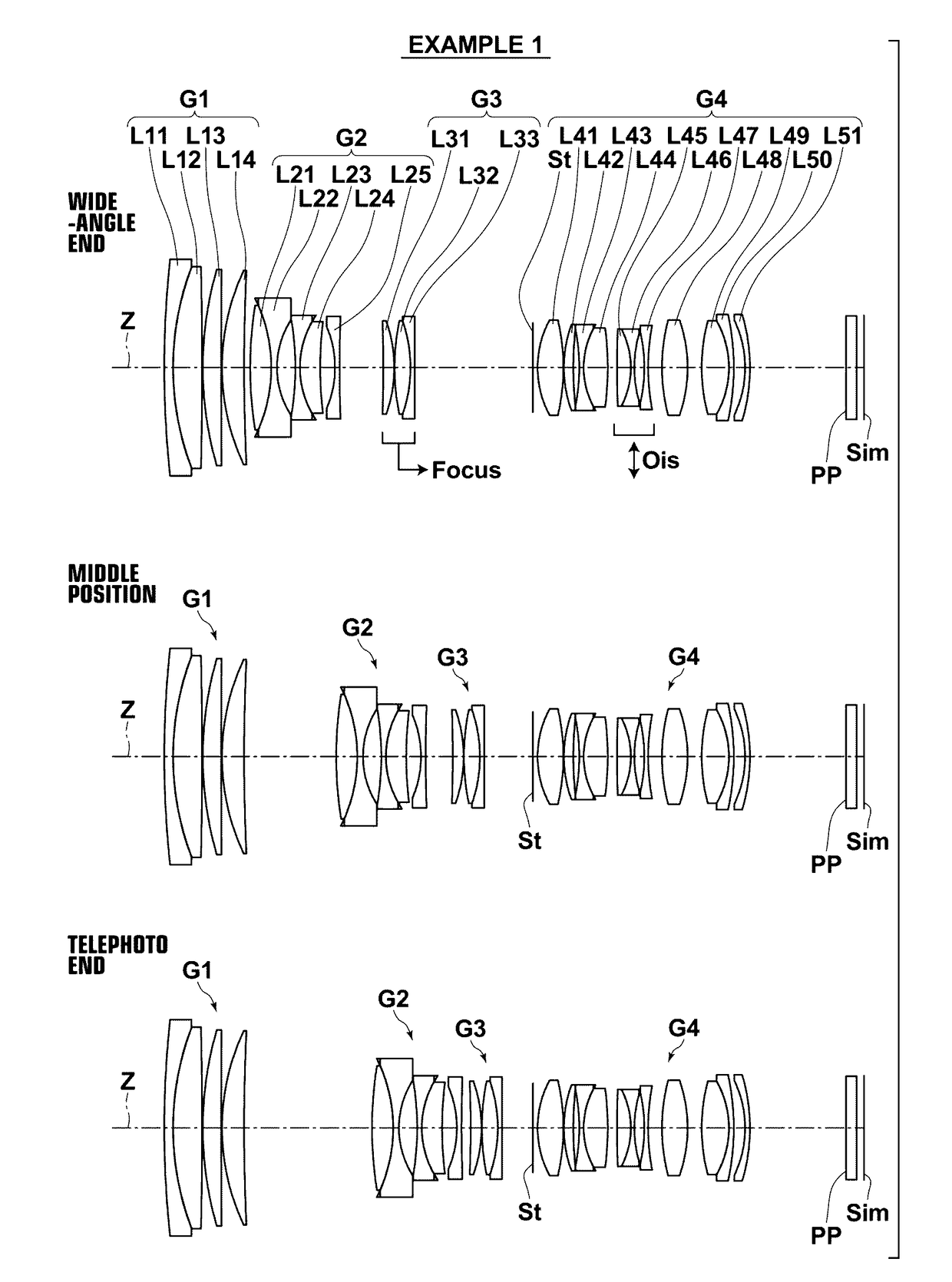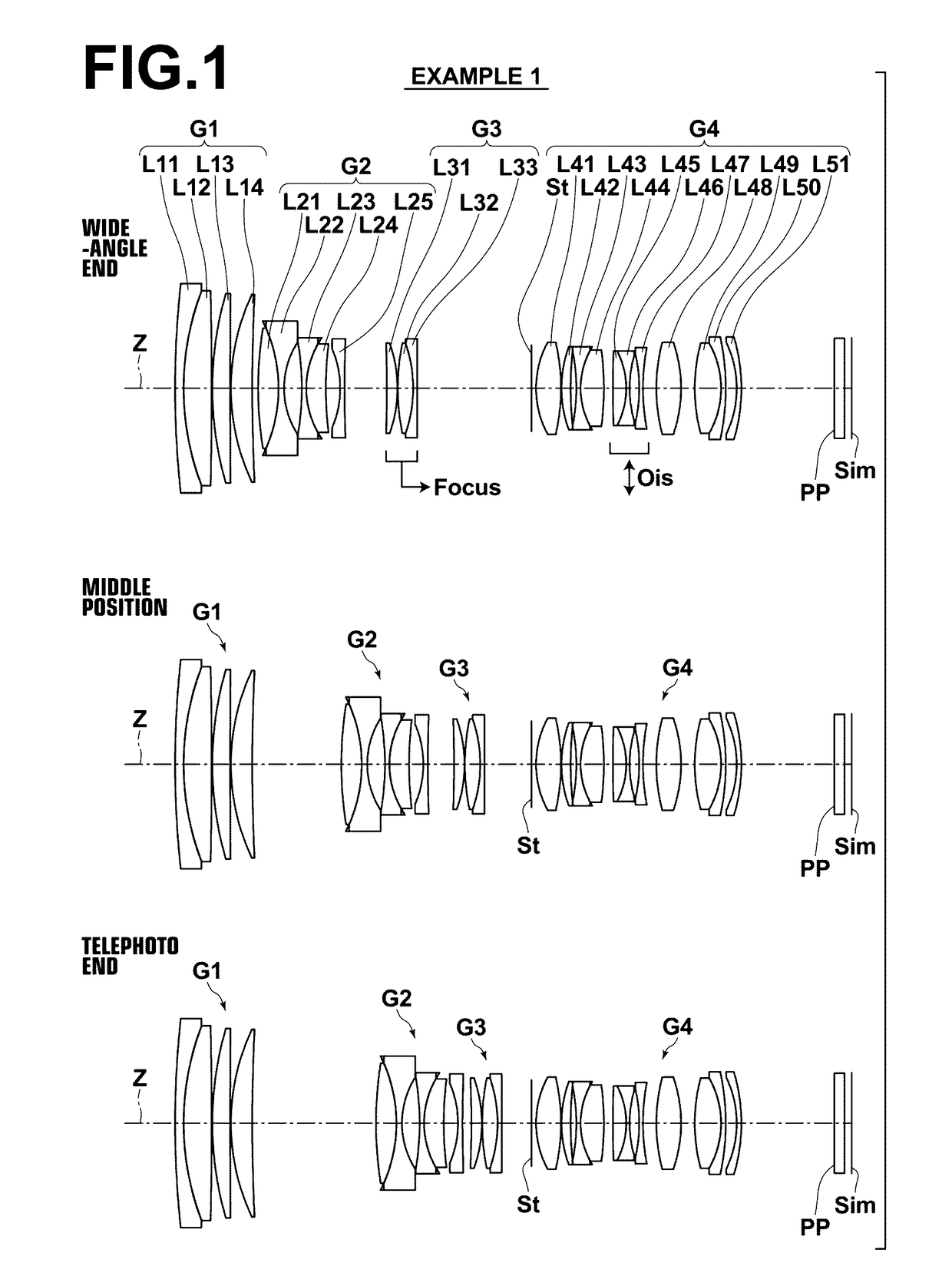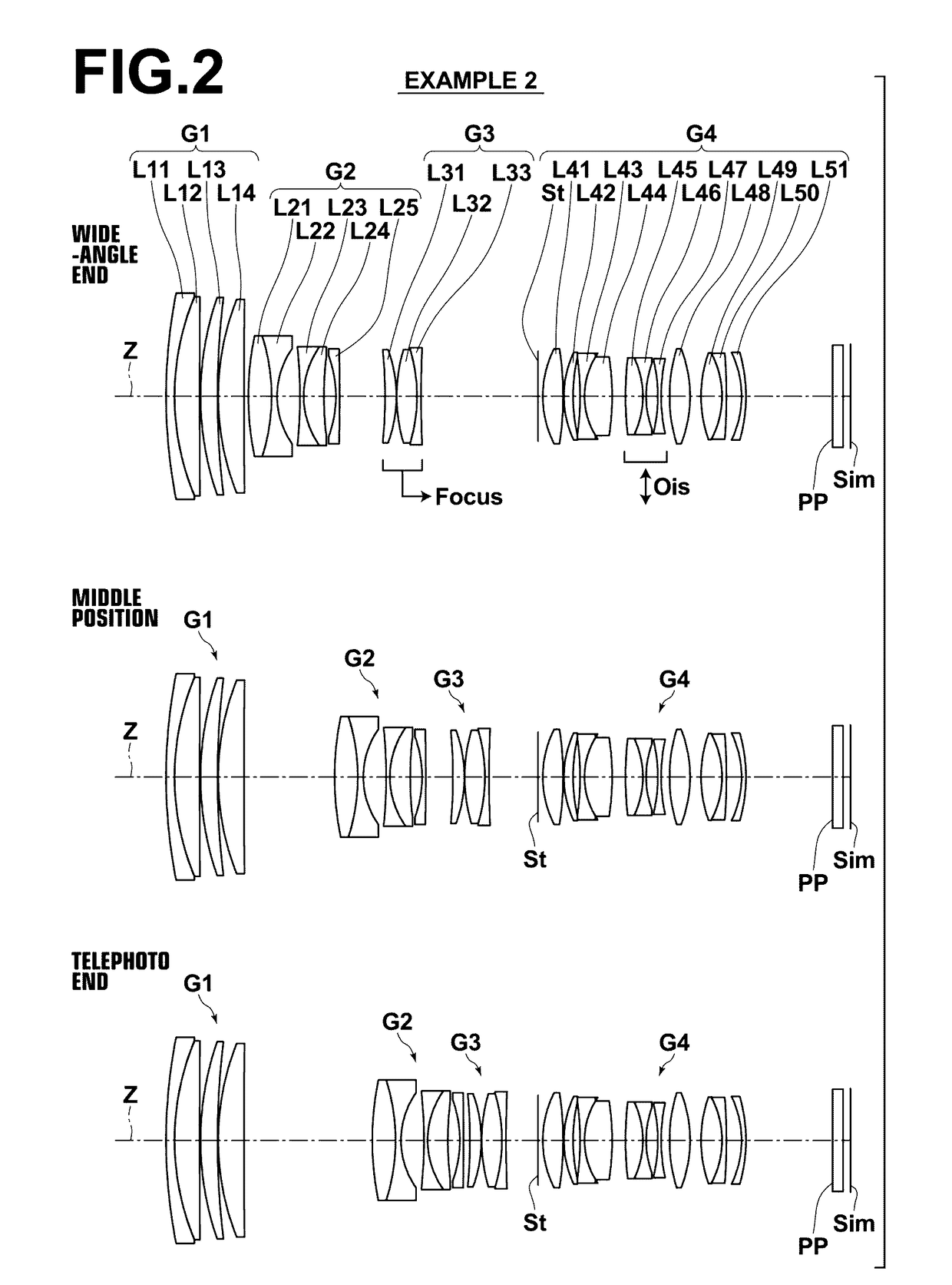Zoom lens and imaging apparatus
a zoom lens and imaging apparatus technology, applied in the field of zoom lenses, can solve the problems of chromatic aberration, coma aberration, chromatic aberration, and difficulty in suppressing decentering coma, and achieve the effects of suppressing aberration variation, high optical performance, and light weigh
- Summary
- Abstract
- Description
- Claims
- Application Information
AI Technical Summary
Benefits of technology
Problems solved by technology
Method used
Image
Examples
Embodiment Construction
[0100]Hereinafter, an embodiment of the present invention will be described in detail with reference to the drawings. FIG. 1 is a sectional view illustrating the lens configuration of a zoom lens according to one embodiment of the invention. The configuration example shown in FIG. 1 is the same as the configuration of a zoom lens of Example 1, which will be described later. In FIG. 1, the left side is the object side and the right side is the image side. An aperture stop St shown in the drawing does not necessarily represent the size and the shape thereof, but represents the position thereof along the optical axis Z.
[0101]As shown in FIG. 1, this zoom lens consists of, in order from the object side, a first lens group G1 having a positive refractive power, a second lens group G2 having a negative refractive power, a third lens group G3 having a positive refractive power (which corresponds to an mp lens group of the invention), and a fourth lens group G4 having a positive refractive ...
PUM
 Login to View More
Login to View More Abstract
Description
Claims
Application Information
 Login to View More
Login to View More - R&D
- Intellectual Property
- Life Sciences
- Materials
- Tech Scout
- Unparalleled Data Quality
- Higher Quality Content
- 60% Fewer Hallucinations
Browse by: Latest US Patents, China's latest patents, Technical Efficacy Thesaurus, Application Domain, Technology Topic, Popular Technical Reports.
© 2025 PatSnap. All rights reserved.Legal|Privacy policy|Modern Slavery Act Transparency Statement|Sitemap|About US| Contact US: help@patsnap.com



